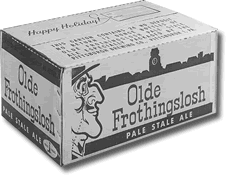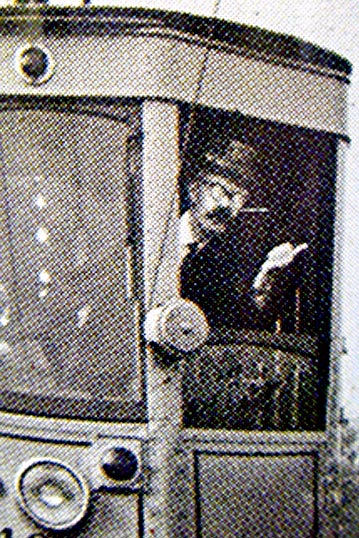First, let’s start with a story that’s going to sound like quite a digression—
but stick with us on this… it will all tie back in.
Backtrack to the 1950s.
An enormously popular morning radio show in Pittsburgh was
“Cordic and Company,”
presented by Rege Cordic on KDKA.
This program was so popular that it commanded 70–85% of the listeners across a 13-state area, in the days when radio was king
(leaving the remaining 15–30% of the listeners for Pittsburgh’s twenty other radio stations to divvy up).
The show was a combination music/humor show, playing popular music interpersed with an unending flow of skits
featuring a regular daily cast of zany characters.
Another popular feature of the show was its fake commercials.
Morning radio in the 1950s was like primetime evening television of today,
in that it was the portion of the day that earned all of the money for the station.
It’s when the bulk of the listeners tuned in.
Therefore, all of the big-name sponsors put their money into that segment of the day:
these days, it’s the evening shows; in Pittsburgh in the 1950s and 60s, it was Cordic and Company.
Cordic and Company had advertisements for breakfast cereal, automobiles, cigarettes, beer…
all of the major local and national companies vie for advertising time on Cordic and Company.
Rege Cordic’s unique brand of humor was so successful that he supposedly had free-reign with the sponsor’s commercials.
These days, commercials are so sacrosanct to a broacasting station that most of them would never let a broadcaster even comment
about its commercials, let alone poke fun at them or alter them.
Rege was the exception.
When he poked fun at his sponsors, the listening public loved it!
For each of the major types of products that Cordic and Company advertised, Rege also ran fake ads for “competing”
(but non-existent) products.
To poke fun at the breakfast cereal commercials, he advertised his own Weedies Cereal (made from weeds);
automobile commercials, he ran ads for his own Crudleigh V-9;
for cigarettes (which were then advertising longer cigarettes and longer smokes), Rege advertised his own Mediocre Midgets Cigarettes.
and to poke fun at the beer commercials, Rege Cordic ran a regular, on-going series of
commercials for Olde Frothingslosh.
In a time when the beer industry was putting its emphasis on “lite” beers,
Rege carried it to the next step: Olde Frothingslosh was “so light” that it's foam was on the bottom.
It was advertised every morning as “Olde Frothingslosh: the Pale Stale Ale with the foam on the bottom,”
a beer that was “brewed by Sir Reginald P. Frothingslosh using hippity-hops from the banks of Upper Crudney on the Thames,”
and was “brewed with pure mountain crud water.”
Well, to say that this put-on was successful is an understatement: it was so successful that it backfired.
KDKA started to get letters and phone calls from store owners and bartenders saying that everyone was asking for Olde Frothingslosh…
where can they get it?
Well, with that kind of demand for a non-existent product, the idea grew of actually marketing it.
A contract was made with The Pittsburgh Brewing Company, makers of Iron City Beer, to change the labeling on their beer during the Christmas holiday season,
so that Olde Frothingslosh would finally be available to Pittsburghers.
It seemed to strike Pittsburgh’s funny-bone just right, and became an instant success.
Iron City Beer was marketed for decades with self-deprecating Olde Frothingslosh labeling at holiday time.
And yes, this time it was an actual marketed product, available on store shelves.
Now, back to our main point.
My father (Mac McGrew) and Rege Cordic were good friends.
Rege was quite a railroad and trolley fan, and my father worked for an advertising agency.
So in 1978, when Rege wanted a trolley theme for one of the Olde Frothingslosh labels,
he and my father collaborated on a picture to be shot at The Pennsylvania Trolley Museum…
a museum that my father had helped to establish.
This label was then used on the final marketed product.
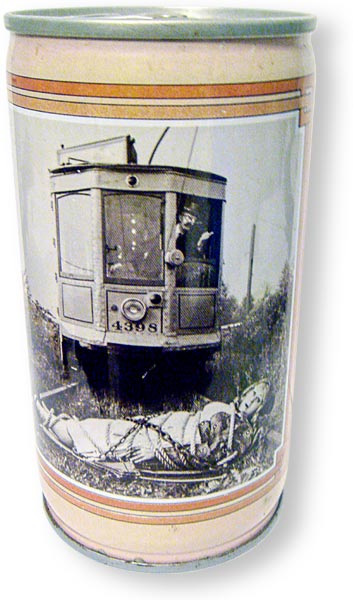
The time-honored movie tradition of a damsel in distress being tied to the railroad tracks by the dastardly villian
would be played out for this Pittsburgh beercan label as a damsel (“Miss Frothingslosh”)
in distress on a Pittsburgh streetcar line,
with the role of the streetcar motorman being played by a false-moustachioed Mac McGrew.
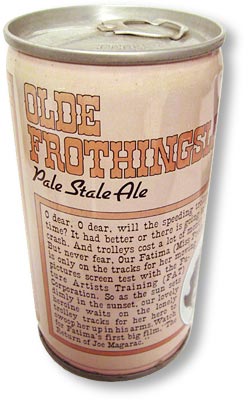
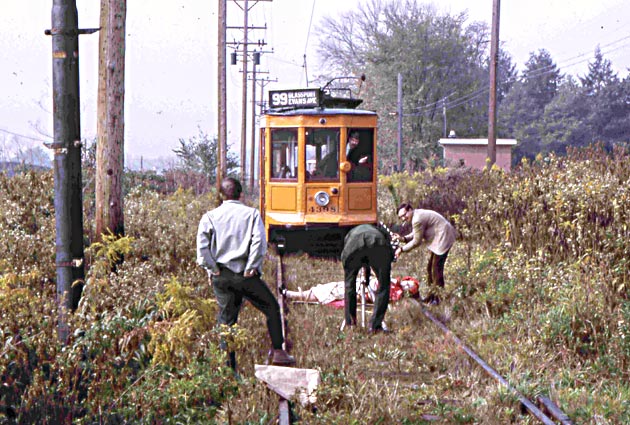 A Pittsburgh advertising team sets up the picture for the Frothingslosh label,
A Pittsburgh advertising team sets up the picture for the Frothingslosh label,